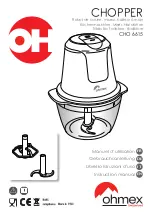
Hardware Initialization States
3-21
Peripheral Functions
Note:
Stack Pointer Initialization
The software stack pointer (R7) must be initialized by the programmer, so
that it points to some legitimate address in data memory (RAM). This must
be done prior to any CALL or C
CC
instruction. If this is not done, then the first
push/pop operation performed on the STACK will render the Program Count-
er to an unknown state.
Table 3–2. State of the Status Register (17 bit) after RESET Low-to-High
(Bits 5 through 16 are left uninitialized)
Bit
Bit Name
Initialized Value
Description
0
XM
0
Extended sign mode disabled
1
UM
0
Unsigned multiplier mode disabled (allows signed multiplier mode)
2
OM
0
Overflow mode disabled (allows ALU normal mode)
3
FM
0
Shift mode for fractional multiplication disabled (allows unsigned
fractional/integer arithmetic)
4
IM
0
Global interrupt enable bit
5
(reserved)
Reserved for future use
6
XZF
Transfer equal-to-zero status bit
7
XSF
Transfer sign status bit
8
RCF
Auxiliary register carry-out status bit
9
RZF
Auxiliary register equal-to-zero status bit
10
OF
Same state as
Accumulator overflow status bit
11
SF
before RESET
Accumulator sign status bit (extended 17th bit)
12
ZF
Accumulator equal-to-zero status bit (16 bits)
13
CF
Accumulator carry-out status bit (16th ALU bit)
14
TF1
Test flag 1
15
TF2
Test flag 2
16
TAG
Memory tag
Summary of Contents for MSP50C614
Page 1: ...MSP50C614 Mixed Signal Processor User s Guide SPSU014 January 2000 Printed on Recycled Paper ...
Page 6: ...vi ...
Page 92: ...3 22 ...
Page 300: ...Instruction Set Summay 4 208 Assembly Language Instructions ...
Page 314: ...Software Emulator 5 14 Figure 5 13 Project Menu Figure 5 14 Project Open Dialog ...
Page 325: ...Software Emulator 5 25 Code Development Tools Figure 5 25 EPROM Programming Dialog ...
Page 331: ...Software Emulator 5 31 Code Development Tools Figure 5 31 Context Sensitive Help System ...
Page 368: ...5 68 ...
Page 394: ...7 12 ...
Page 402: ...A 8 ...
Page 412: ...Packaging B 10 ...
















































